Throughout the week our Division of Birds will help mark the #SpringMigration of our feathered friends.
Today they’re giving tips on how to get started as a birder—one of the fastest-growing hobbies—even while staying safe at home. #NatureNerding101 https://abs.twimg.com/emoji/v2/... draggable="false" alt="🐦" title="Bird" aria-label="Emoji: Bird">
https://abs.twimg.com/emoji/v2/... draggable="false" alt="🐦" title="Bird" aria-label="Emoji: Bird">
Today they’re giving tips on how to get started as a birder—one of the fastest-growing hobbies—even while staying safe at home. #NatureNerding101
Where to begin your bird-nerd journey? All you need is a window. #DYK there are ~11K bird species? Look to the sky for raptors and down for sparrows. Passively observing nature is a great way to reduce stress too.  https://abs.twimg.com/emoji/v2/... draggable="false" alt="📸" title="Camera with flash" aria-label="Emoji: Camera with flash"> White-breasted Nuthatch (Sitta carolinensis). #NatureNerding101
https://abs.twimg.com/emoji/v2/... draggable="false" alt="📸" title="Camera with flash" aria-label="Emoji: Camera with flash"> White-breasted Nuthatch (Sitta carolinensis). #NatureNerding101
Most birders use binoculars. “Binos” come in a range of magnifications stated as A x B, where "A" is the amount of magnification and "B" is the amount of light the lenses let in. The most popular configurations among birders are 8 x 42 and 10 x 42.  https://abs.twimg.com/emoji/v2/... draggable="false" alt="🦉" title="Owl" aria-label="Emoji: Owl">
https://abs.twimg.com/emoji/v2/... draggable="false" alt="🦉" title="Owl" aria-label="Emoji: Owl">
#NatureNerding101
#NatureNerding101
Field guides are very useful, so beginning birders should carry one. Looking at a bird and then a guide can help you learn which features to keep an eye out for. There are great apps and online tools too, like @MerlinBirdID and @inaturalist. #NatureNerding101
Do #CitizenScience! Upload your sightings to @Team_eBird& #39;s app and help researchers track the movement and distribution of  https://abs.twimg.com/emoji/v2/... draggable="false" alt="🦅" title="Eagle" aria-label="Emoji: Eagle">
https://abs.twimg.com/emoji/v2/... draggable="false" alt="🦅" title="Eagle" aria-label="Emoji: Eagle"> https://abs.twimg.com/emoji/v2/... draggable="false" alt="🐦" title="Bird" aria-label="Emoji: Bird">
https://abs.twimg.com/emoji/v2/... draggable="false" alt="🐦" title="Bird" aria-label="Emoji: Bird"> https://abs.twimg.com/emoji/v2/... draggable="false" alt="🦉" title="Owl" aria-label="Emoji: Owl">. It’s also a fun way to note your neighborhood species and compete with other bird-nerds.
https://abs.twimg.com/emoji/v2/... draggable="false" alt="🦉" title="Owl" aria-label="Emoji: Owl">. It’s also a fun way to note your neighborhood species and compete with other bird-nerds.
One of our ornithologists logged 800+ birds in ONE year!
One of our ornithologists logged 800+ birds in ONE year!
Now, how to identify a bird. It’s all about using your observations and location to narrow down the range of possibilities; pinpoint specific characters; and make an ID. Noting that a waterbird is NOT a duck is great start!
 https://abs.twimg.com/emoji/v2/... draggable="false" alt="📸" title="Camera with flash" aria-label="Emoji: Camera with flash"> Great Blue Heron (Ardea herodias) #NatureNerding101
https://abs.twimg.com/emoji/v2/... draggable="false" alt="📸" title="Camera with flash" aria-label="Emoji: Camera with flash"> Great Blue Heron (Ardea herodias) #NatureNerding101
Bonus: if you see a bird soaring in the sky, it is most likely a hawk or a vulture. #NatureNerding101
Left https://abs.twimg.com/emoji/v2/... draggable="false" alt="📸" title="Camera with flash" aria-label="Emoji: Camera with flash"> Turkey Vulture (Cathartes aura)
https://abs.twimg.com/emoji/v2/... draggable="false" alt="📸" title="Camera with flash" aria-label="Emoji: Camera with flash"> Turkey Vulture (Cathartes aura)
Right https://abs.twimg.com/emoji/v2/... draggable="false" alt="📸" title="Camera with flash" aria-label="Emoji: Camera with flash"> Red-tailed Hawk (Buteo jamaciensis)
https://abs.twimg.com/emoji/v2/... draggable="false" alt="📸" title="Camera with flash" aria-label="Emoji: Camera with flash"> Red-tailed Hawk (Buteo jamaciensis)
Left
Right
When birds are brightly colored, try to at least remember its most striking color. Pay attention to conspicuous color patches on its back or head, like the black stripes and yellow lores on this White-throated sparrow (Zonotrichia albicolis). #NatureNerding101
Next, take some mental notes on the bird’s characteristics:
 https://abs.twimg.com/emoji/v2/... draggable="false" alt="✅" title="White heavy check mark" aria-label="Emoji: White heavy check mark">Overall color and pattern
https://abs.twimg.com/emoji/v2/... draggable="false" alt="✅" title="White heavy check mark" aria-label="Emoji: White heavy check mark">Overall color and pattern
 https://abs.twimg.com/emoji/v2/... draggable="false" alt="✅" title="White heavy check mark" aria-label="Emoji: White heavy check mark">Bill shape, color, and size
https://abs.twimg.com/emoji/v2/... draggable="false" alt="✅" title="White heavy check mark" aria-label="Emoji: White heavy check mark">Bill shape, color, and size
 https://abs.twimg.com/emoji/v2/... draggable="false" alt="✅" title="White heavy check mark" aria-label="Emoji: White heavy check mark">Leg color
https://abs.twimg.com/emoji/v2/... draggable="false" alt="✅" title="White heavy check mark" aria-label="Emoji: White heavy check mark">Leg color
 https://abs.twimg.com/emoji/v2/... draggable="false" alt="✅" title="White heavy check mark" aria-label="Emoji: White heavy check mark">Tail length and shape
https://abs.twimg.com/emoji/v2/... draggable="false" alt="✅" title="White heavy check mark" aria-label="Emoji: White heavy check mark">Tail length and shape
 https://abs.twimg.com/emoji/v2/... draggable="false" alt="📸" title="Camera with flash" aria-label="Emoji: Camera with flash">: Bonaparte& #39;s gull (Chroicocephalus philadelphia)
https://abs.twimg.com/emoji/v2/... draggable="false" alt="📸" title="Camera with flash" aria-label="Emoji: Camera with flash">: Bonaparte& #39;s gull (Chroicocephalus philadelphia)
Is its  https://abs.twimg.com/emoji/v2/... draggable="false" alt="💵" title="Banknote with dollar sign" aria-label="Emoji: Banknote with dollar sign"> shaped like a
https://abs.twimg.com/emoji/v2/... draggable="false" alt="💵" title="Banknote with dollar sign" aria-label="Emoji: Banknote with dollar sign"> shaped like a https://abs.twimg.com/emoji/v2/... draggable="false" alt="🥄" title="Spoon" aria-label="Emoji: Spoon">?
https://abs.twimg.com/emoji/v2/... draggable="false" alt="🥄" title="Spoon" aria-label="Emoji: Spoon">?
 https://abs.twimg.com/emoji/v2/... draggable="false" alt="📸" title="Camera with flash" aria-label="Emoji: Camera with flash"> Roseate spoonbill (Platalea ajaja)
https://abs.twimg.com/emoji/v2/... draggable="false" alt="📸" title="Camera with flash" aria-label="Emoji: Camera with flash"> Roseate spoonbill (Platalea ajaja)
In time you’ll be able to assess something birders call ‘gestalt:& #39; the overall shape, posture, and proportions of a bird. Learning the gestalt of different species can help you to quickly identify common birds. Even in silhouette!
 https://abs.twimg.com/emoji/v2/... draggable="false" alt="📸" title="Camera with flash" aria-label="Emoji: Camera with flash"> Common Nighthawk (Chordeiles minor)
https://abs.twimg.com/emoji/v2/... draggable="false" alt="📸" title="Camera with flash" aria-label="Emoji: Camera with flash"> Common Nighthawk (Chordeiles minor)
Cardinals give loud clear whistles and wrens make rolling musical warbles. Pay attention to common birds and their distinctive  https://abs.twimg.com/emoji/v2/... draggable="false" alt="🎶" title="Multiple musical notes" aria-label="Emoji: Multiple musical notes">.
https://abs.twimg.com/emoji/v2/... draggable="false" alt="🎶" title="Multiple musical notes" aria-label="Emoji: Multiple musical notes">.
Listen to this @MacaulayLibrary recording of a Carolina wren (Thryothorus ludovicianus), made by @NMNH& #39;s Jacob Saucier. https://macaulaylibrary.org/asset/177810681 ">https://macaulaylibrary.org/asset/177...
Listen to this @MacaulayLibrary recording of a Carolina wren (Thryothorus ludovicianus), made by @NMNH& #39;s Jacob Saucier. https://macaulaylibrary.org/asset/177810681 ">https://macaulaylibrary.org/asset/177...
Need some more inspiration?
Read this piece written by one of our research associates (and avid https://abs.twimg.com/emoji/v2/... draggable="false" alt="🚴" title="Person biking" aria-label="Emoji: Person biking"> and
https://abs.twimg.com/emoji/v2/... draggable="false" alt="🚴" title="Person biking" aria-label="Emoji: Person biking"> and  https://abs.twimg.com/emoji/v2/... draggable="false" alt="🐦" title="Bird" aria-label="Emoji: Bird">er), ornithologist Bruce Beehler. https://thehill.com/changing-america/opinion/491551-rediscover-nature-during-a-time-of-coronavirus">https://thehill.com/changing-...
https://abs.twimg.com/emoji/v2/... draggable="false" alt="🐦" title="Bird" aria-label="Emoji: Bird">er), ornithologist Bruce Beehler. https://thehill.com/changing-america/opinion/491551-rediscover-nature-during-a-time-of-coronavirus">https://thehill.com/changing-...
Read this piece written by one of our research associates (and avid
Okay. Take a break from your screen.
Look out the window. Start birding.
 https://abs.twimg.com/emoji/v2/... draggable="false" alt="🐦" title="Bird" aria-label="Emoji: Bird">
https://abs.twimg.com/emoji/v2/... draggable="false" alt="🐦" title="Bird" aria-label="Emoji: Bird"> https://abs.twimg.com/emoji/v2/... draggable="false" alt="🦉" title="Owl" aria-label="Emoji: Owl">
https://abs.twimg.com/emoji/v2/... draggable="false" alt="🦉" title="Owl" aria-label="Emoji: Owl"> https://abs.twimg.com/emoji/v2/... draggable="false" alt="🦆" title="Duck" aria-label="Emoji: Duck">
https://abs.twimg.com/emoji/v2/... draggable="false" alt="🦆" title="Duck" aria-label="Emoji: Duck"> https://abs.twimg.com/emoji/v2/... draggable="false" alt="🦢" title="Swan" aria-label="Emoji: Swan">
https://abs.twimg.com/emoji/v2/... draggable="false" alt="🦢" title="Swan" aria-label="Emoji: Swan"> https://abs.twimg.com/emoji/v2/... draggable="false" alt="🦅" title="Eagle" aria-label="Emoji: Eagle">
https://abs.twimg.com/emoji/v2/... draggable="false" alt="🦅" title="Eagle" aria-label="Emoji: Eagle"> https://abs.twimg.com/emoji/v2/... draggable="false" alt="🦜" title="Parrot" aria-label="Emoji: Parrot">
https://abs.twimg.com/emoji/v2/... draggable="false" alt="🦜" title="Parrot" aria-label="Emoji: Parrot"> https://abs.twimg.com/emoji/v2/... draggable="false" alt="🦃" title="Turkey (bird)" aria-label="Emoji: Turkey (bird)">
https://abs.twimg.com/emoji/v2/... draggable="false" alt="🦃" title="Turkey (bird)" aria-label="Emoji: Turkey (bird)"> https://abs.twimg.com/emoji/v2/... draggable="false" alt="🦚" title="Peacock" aria-label="Emoji: Peacock">
https://abs.twimg.com/emoji/v2/... draggable="false" alt="🦚" title="Peacock" aria-label="Emoji: Peacock"> https://abs.twimg.com/emoji/v2/... draggable="false" alt="🕊️" title="Dove of peace" aria-label="Emoji: Dove of peace">
https://abs.twimg.com/emoji/v2/... draggable="false" alt="🕊️" title="Dove of peace" aria-label="Emoji: Dove of peace">
#NatureNerding101 #SpringMigration
 https://abs.twimg.com/emoji/v2/... draggable="false" alt="📸" title="Camera with flash" aria-label="Emoji: Camera with flash"> Black-capped Chickadee (Poecile atricapillus).
https://abs.twimg.com/emoji/v2/... draggable="false" alt="📸" title="Camera with flash" aria-label="Emoji: Camera with flash"> Black-capped Chickadee (Poecile atricapillus).
Look out the window. Start birding.
#NatureNerding101 #SpringMigration

 Read on Twitter
Read on Twitter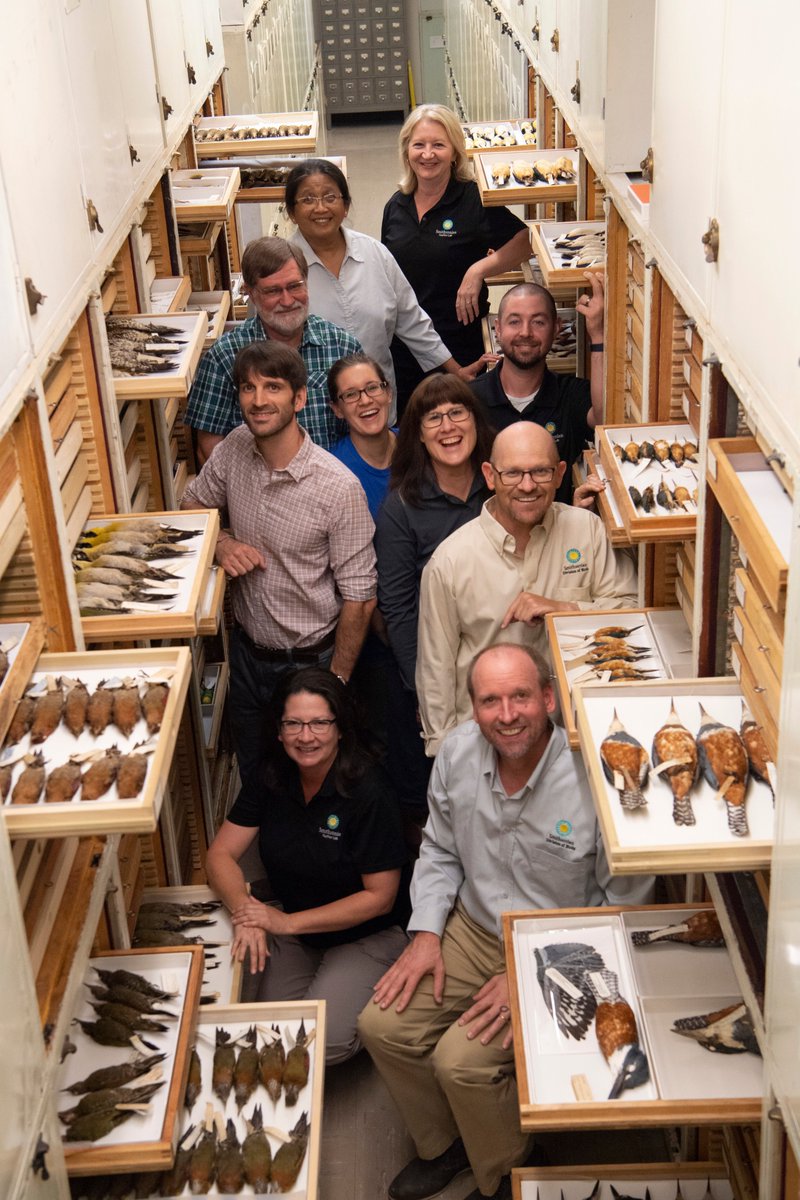 " title="Throughout the week our Division of Birds will help mark the #SpringMigration of our feathered friends. Today they’re giving tips on how to get started as a birder—one of the fastest-growing hobbies—even while staying safe at home. #NatureNerding101 https://abs.twimg.com/emoji/v2/... draggable="false" alt="🐦" title="Bird" aria-label="Emoji: Bird">" class="img-responsive" style="max-width:100%;"/>
" title="Throughout the week our Division of Birds will help mark the #SpringMigration of our feathered friends. Today they’re giving tips on how to get started as a birder—one of the fastest-growing hobbies—even while staying safe at home. #NatureNerding101 https://abs.twimg.com/emoji/v2/... draggable="false" alt="🐦" title="Bird" aria-label="Emoji: Bird">" class="img-responsive" style="max-width:100%;"/>
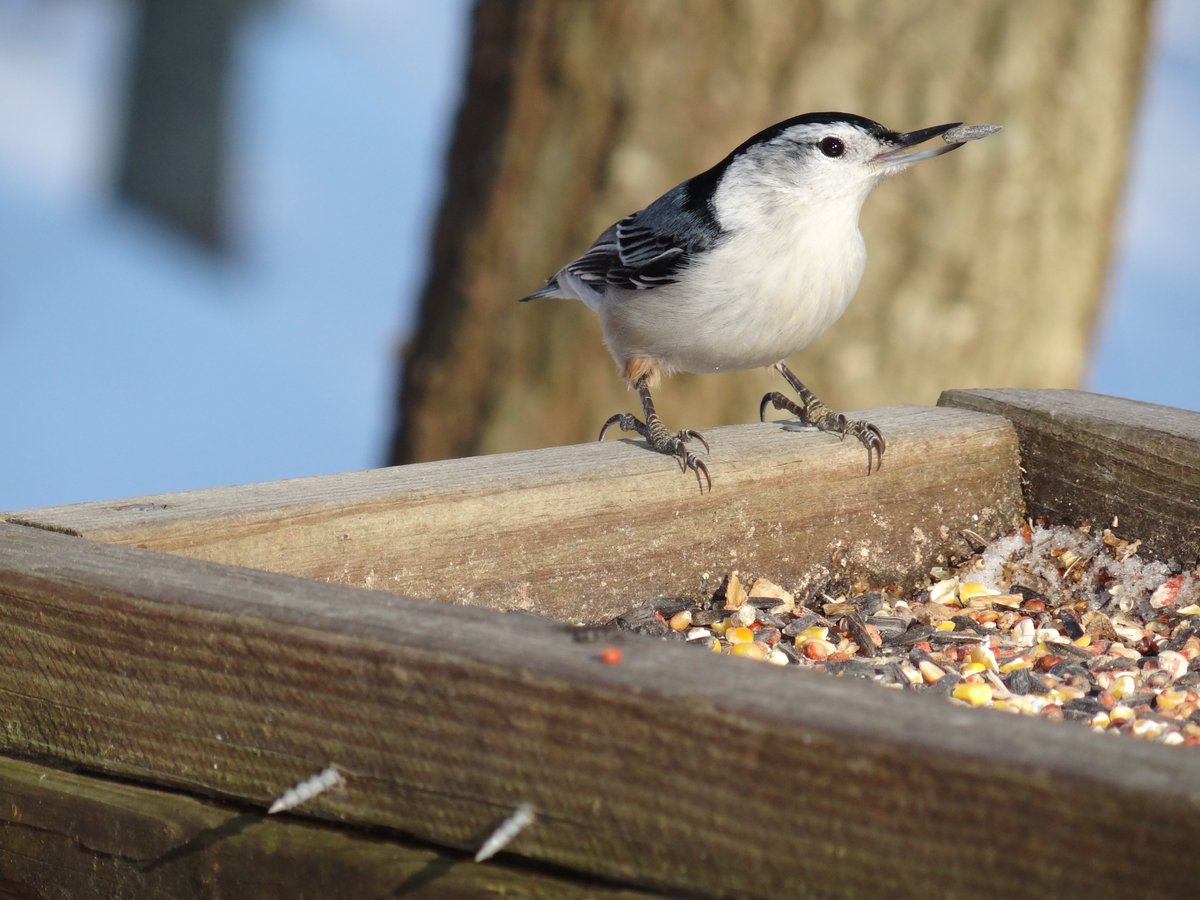 White-breasted Nuthatch (Sitta carolinensis). #NatureNerding101" title="Where to begin your bird-nerd journey? All you need is a window. #DYK there are ~11K bird species? Look to the sky for raptors and down for sparrows. Passively observing nature is a great way to reduce stress too. https://abs.twimg.com/emoji/v2/... draggable="false" alt="📸" title="Camera with flash" aria-label="Emoji: Camera with flash"> White-breasted Nuthatch (Sitta carolinensis). #NatureNerding101" class="img-responsive" style="max-width:100%;"/>
White-breasted Nuthatch (Sitta carolinensis). #NatureNerding101" title="Where to begin your bird-nerd journey? All you need is a window. #DYK there are ~11K bird species? Look to the sky for raptors and down for sparrows. Passively observing nature is a great way to reduce stress too. https://abs.twimg.com/emoji/v2/... draggable="false" alt="📸" title="Camera with flash" aria-label="Emoji: Camera with flash"> White-breasted Nuthatch (Sitta carolinensis). #NatureNerding101" class="img-responsive" style="max-width:100%;"/>
 #NatureNerding101" title="Most birders use binoculars. “Binos” come in a range of magnifications stated as A x B, where "A" is the amount of magnification and "B" is the amount of light the lenses let in. The most popular configurations among birders are 8 x 42 and 10 x 42. https://abs.twimg.com/emoji/v2/... draggable="false" alt="🦉" title="Owl" aria-label="Emoji: Owl"> #NatureNerding101" class="img-responsive" style="max-width:100%;"/>
#NatureNerding101" title="Most birders use binoculars. “Binos” come in a range of magnifications stated as A x B, where "A" is the amount of magnification and "B" is the amount of light the lenses let in. The most popular configurations among birders are 8 x 42 and 10 x 42. https://abs.twimg.com/emoji/v2/... draggable="false" alt="🦉" title="Owl" aria-label="Emoji: Owl"> #NatureNerding101" class="img-responsive" style="max-width:100%;"/>
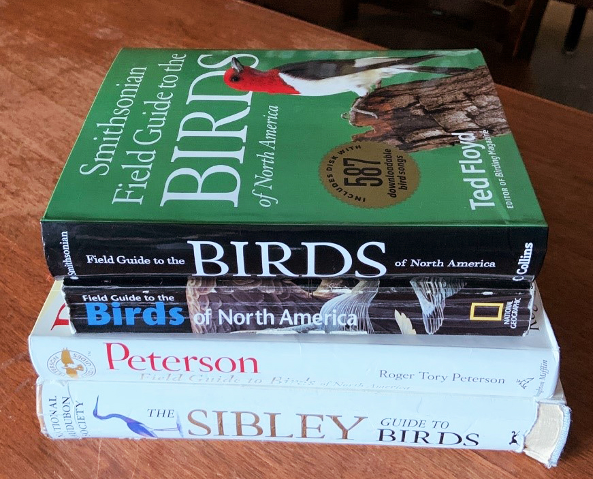
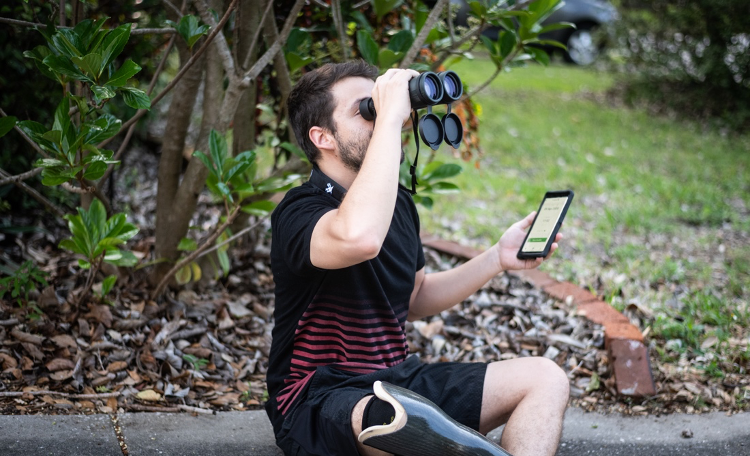 https://abs.twimg.com/emoji/v2/... draggable="false" alt="🐦" title="Bird" aria-label="Emoji: Bird">https://abs.twimg.com/emoji/v2/... draggable="false" alt="🦉" title="Owl" aria-label="Emoji: Owl">. It’s also a fun way to note your neighborhood species and compete with other bird-nerds. One of our ornithologists logged 800+ birds in ONE year!" title="Do #CitizenScience! Upload your sightings to @Team_eBird& #39;s app and help researchers track the movement and distribution of https://abs.twimg.com/emoji/v2/... draggable="false" alt="🦅" title="Eagle" aria-label="Emoji: Eagle">https://abs.twimg.com/emoji/v2/... draggable="false" alt="🐦" title="Bird" aria-label="Emoji: Bird">https://abs.twimg.com/emoji/v2/... draggable="false" alt="🦉" title="Owl" aria-label="Emoji: Owl">. It’s also a fun way to note your neighborhood species and compete with other bird-nerds. One of our ornithologists logged 800+ birds in ONE year!" class="img-responsive" style="max-width:100%;"/>
https://abs.twimg.com/emoji/v2/... draggable="false" alt="🐦" title="Bird" aria-label="Emoji: Bird">https://abs.twimg.com/emoji/v2/... draggable="false" alt="🦉" title="Owl" aria-label="Emoji: Owl">. It’s also a fun way to note your neighborhood species and compete with other bird-nerds. One of our ornithologists logged 800+ birds in ONE year!" title="Do #CitizenScience! Upload your sightings to @Team_eBird& #39;s app and help researchers track the movement and distribution of https://abs.twimg.com/emoji/v2/... draggable="false" alt="🦅" title="Eagle" aria-label="Emoji: Eagle">https://abs.twimg.com/emoji/v2/... draggable="false" alt="🐦" title="Bird" aria-label="Emoji: Bird">https://abs.twimg.com/emoji/v2/... draggable="false" alt="🦉" title="Owl" aria-label="Emoji: Owl">. It’s also a fun way to note your neighborhood species and compete with other bird-nerds. One of our ornithologists logged 800+ birds in ONE year!" class="img-responsive" style="max-width:100%;"/>
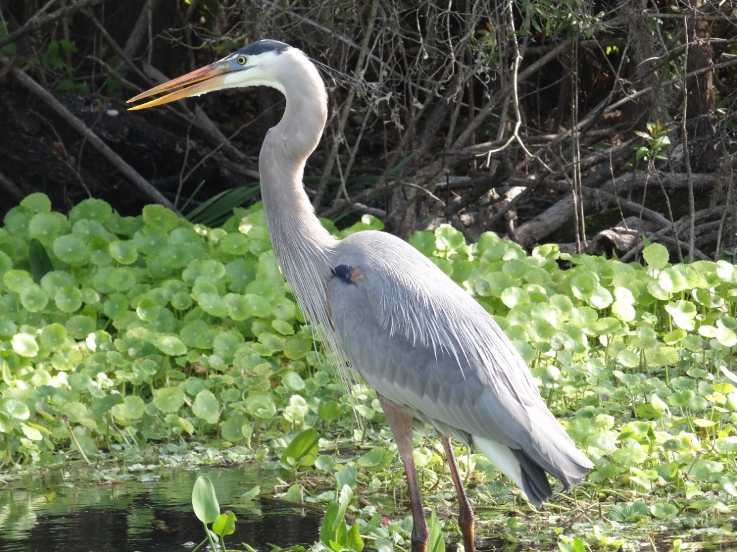 Great Blue Heron (Ardea herodias) #NatureNerding101" title="Now, how to identify a bird. It’s all about using your observations and location to narrow down the range of possibilities; pinpoint specific characters; and make an ID. Noting that a waterbird is NOT a duck is great start!https://abs.twimg.com/emoji/v2/... draggable="false" alt="📸" title="Camera with flash" aria-label="Emoji: Camera with flash"> Great Blue Heron (Ardea herodias) #NatureNerding101" class="img-responsive" style="max-width:100%;"/>
Great Blue Heron (Ardea herodias) #NatureNerding101" title="Now, how to identify a bird. It’s all about using your observations and location to narrow down the range of possibilities; pinpoint specific characters; and make an ID. Noting that a waterbird is NOT a duck is great start!https://abs.twimg.com/emoji/v2/... draggable="false" alt="📸" title="Camera with flash" aria-label="Emoji: Camera with flash"> Great Blue Heron (Ardea herodias) #NatureNerding101" class="img-responsive" style="max-width:100%;"/>
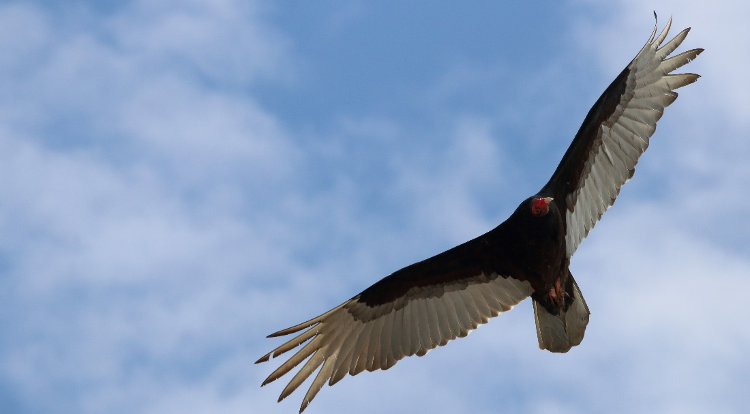 Turkey Vulture (Cathartes aura)Right https://abs.twimg.com/emoji/v2/... draggable="false" alt="📸" title="Camera with flash" aria-label="Emoji: Camera with flash"> Red-tailed Hawk (Buteo jamaciensis)" title="Bonus: if you see a bird soaring in the sky, it is most likely a hawk or a vulture. #NatureNerding101Left https://abs.twimg.com/emoji/v2/... draggable="false" alt="📸" title="Camera with flash" aria-label="Emoji: Camera with flash"> Turkey Vulture (Cathartes aura)Right https://abs.twimg.com/emoji/v2/... draggable="false" alt="📸" title="Camera with flash" aria-label="Emoji: Camera with flash"> Red-tailed Hawk (Buteo jamaciensis)">
Turkey Vulture (Cathartes aura)Right https://abs.twimg.com/emoji/v2/... draggable="false" alt="📸" title="Camera with flash" aria-label="Emoji: Camera with flash"> Red-tailed Hawk (Buteo jamaciensis)" title="Bonus: if you see a bird soaring in the sky, it is most likely a hawk or a vulture. #NatureNerding101Left https://abs.twimg.com/emoji/v2/... draggable="false" alt="📸" title="Camera with flash" aria-label="Emoji: Camera with flash"> Turkey Vulture (Cathartes aura)Right https://abs.twimg.com/emoji/v2/... draggable="false" alt="📸" title="Camera with flash" aria-label="Emoji: Camera with flash"> Red-tailed Hawk (Buteo jamaciensis)">
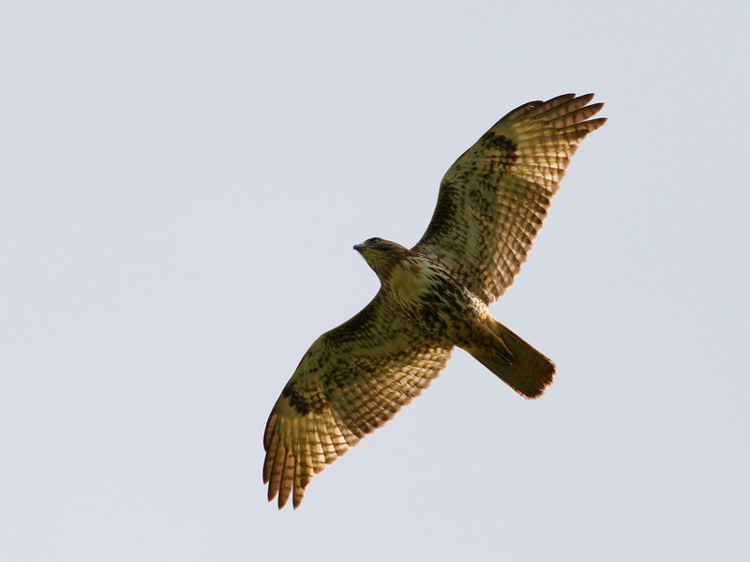 Turkey Vulture (Cathartes aura)Right https://abs.twimg.com/emoji/v2/... draggable="false" alt="📸" title="Camera with flash" aria-label="Emoji: Camera with flash"> Red-tailed Hawk (Buteo jamaciensis)" title="Bonus: if you see a bird soaring in the sky, it is most likely a hawk or a vulture. #NatureNerding101Left https://abs.twimg.com/emoji/v2/... draggable="false" alt="📸" title="Camera with flash" aria-label="Emoji: Camera with flash"> Turkey Vulture (Cathartes aura)Right https://abs.twimg.com/emoji/v2/... draggable="false" alt="📸" title="Camera with flash" aria-label="Emoji: Camera with flash"> Red-tailed Hawk (Buteo jamaciensis)">
Turkey Vulture (Cathartes aura)Right https://abs.twimg.com/emoji/v2/... draggable="false" alt="📸" title="Camera with flash" aria-label="Emoji: Camera with flash"> Red-tailed Hawk (Buteo jamaciensis)" title="Bonus: if you see a bird soaring in the sky, it is most likely a hawk or a vulture. #NatureNerding101Left https://abs.twimg.com/emoji/v2/... draggable="false" alt="📸" title="Camera with flash" aria-label="Emoji: Camera with flash"> Turkey Vulture (Cathartes aura)Right https://abs.twimg.com/emoji/v2/... draggable="false" alt="📸" title="Camera with flash" aria-label="Emoji: Camera with flash"> Red-tailed Hawk (Buteo jamaciensis)">
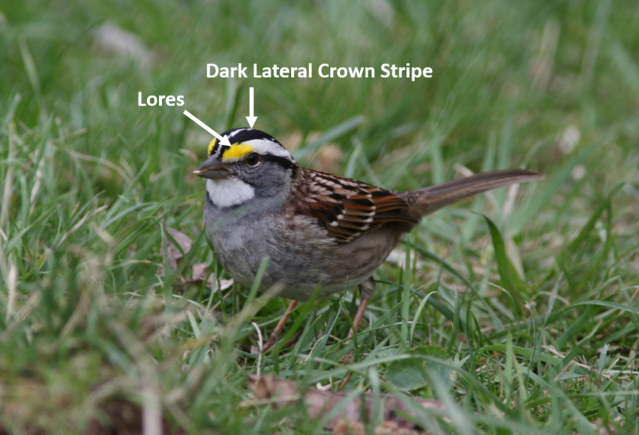
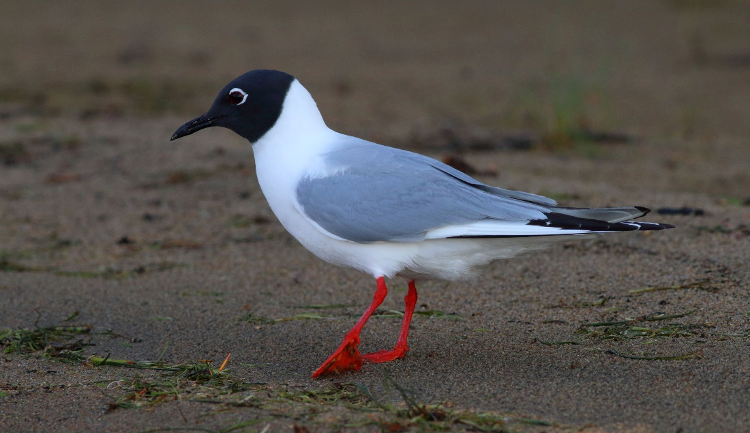 Overall color and patternhttps://abs.twimg.com/emoji/v2/... draggable="false" alt="✅" title="White heavy check mark" aria-label="Emoji: White heavy check mark">Bill shape, color, and sizehttps://abs.twimg.com/emoji/v2/... draggable="false" alt="✅" title="White heavy check mark" aria-label="Emoji: White heavy check mark">Leg colorhttps://abs.twimg.com/emoji/v2/... draggable="false" alt="✅" title="White heavy check mark" aria-label="Emoji: White heavy check mark">Tail length and shapehttps://abs.twimg.com/emoji/v2/... draggable="false" alt="📸" title="Camera with flash" aria-label="Emoji: Camera with flash">: Bonaparte& #39;s gull (Chroicocephalus philadelphia)" title="Next, take some mental notes on the bird’s characteristics:https://abs.twimg.com/emoji/v2/... draggable="false" alt="✅" title="White heavy check mark" aria-label="Emoji: White heavy check mark">Overall color and patternhttps://abs.twimg.com/emoji/v2/... draggable="false" alt="✅" title="White heavy check mark" aria-label="Emoji: White heavy check mark">Bill shape, color, and sizehttps://abs.twimg.com/emoji/v2/... draggable="false" alt="✅" title="White heavy check mark" aria-label="Emoji: White heavy check mark">Leg colorhttps://abs.twimg.com/emoji/v2/... draggable="false" alt="✅" title="White heavy check mark" aria-label="Emoji: White heavy check mark">Tail length and shapehttps://abs.twimg.com/emoji/v2/... draggable="false" alt="📸" title="Camera with flash" aria-label="Emoji: Camera with flash">: Bonaparte& #39;s gull (Chroicocephalus philadelphia)" class="img-responsive" style="max-width:100%;"/>
Overall color and patternhttps://abs.twimg.com/emoji/v2/... draggable="false" alt="✅" title="White heavy check mark" aria-label="Emoji: White heavy check mark">Bill shape, color, and sizehttps://abs.twimg.com/emoji/v2/... draggable="false" alt="✅" title="White heavy check mark" aria-label="Emoji: White heavy check mark">Leg colorhttps://abs.twimg.com/emoji/v2/... draggable="false" alt="✅" title="White heavy check mark" aria-label="Emoji: White heavy check mark">Tail length and shapehttps://abs.twimg.com/emoji/v2/... draggable="false" alt="📸" title="Camera with flash" aria-label="Emoji: Camera with flash">: Bonaparte& #39;s gull (Chroicocephalus philadelphia)" title="Next, take some mental notes on the bird’s characteristics:https://abs.twimg.com/emoji/v2/... draggable="false" alt="✅" title="White heavy check mark" aria-label="Emoji: White heavy check mark">Overall color and patternhttps://abs.twimg.com/emoji/v2/... draggable="false" alt="✅" title="White heavy check mark" aria-label="Emoji: White heavy check mark">Bill shape, color, and sizehttps://abs.twimg.com/emoji/v2/... draggable="false" alt="✅" title="White heavy check mark" aria-label="Emoji: White heavy check mark">Leg colorhttps://abs.twimg.com/emoji/v2/... draggable="false" alt="✅" title="White heavy check mark" aria-label="Emoji: White heavy check mark">Tail length and shapehttps://abs.twimg.com/emoji/v2/... draggable="false" alt="📸" title="Camera with flash" aria-label="Emoji: Camera with flash">: Bonaparte& #39;s gull (Chroicocephalus philadelphia)" class="img-responsive" style="max-width:100%;"/>
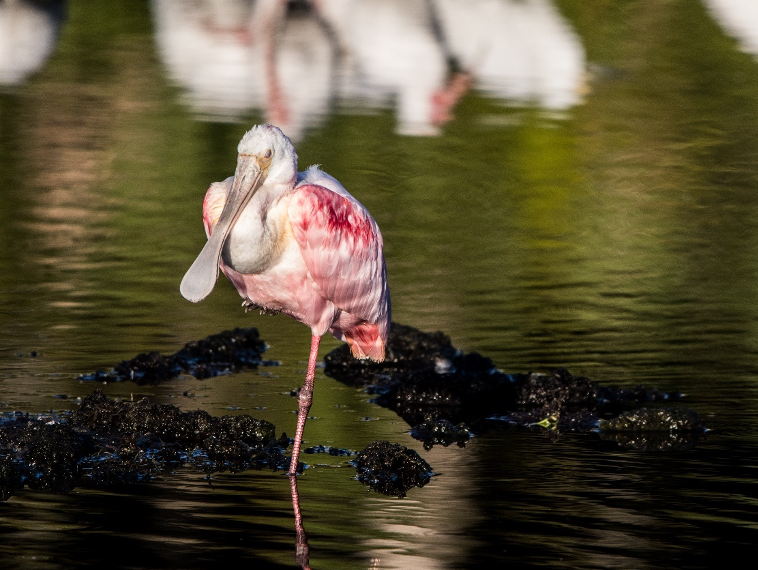 shaped like ahttps://abs.twimg.com/emoji/v2/... draggable="false" alt="🥄" title="Spoon" aria-label="Emoji: Spoon">?https://abs.twimg.com/emoji/v2/... draggable="false" alt="📸" title="Camera with flash" aria-label="Emoji: Camera with flash"> Roseate spoonbill (Platalea ajaja)" title="Is its https://abs.twimg.com/emoji/v2/... draggable="false" alt="💵" title="Banknote with dollar sign" aria-label="Emoji: Banknote with dollar sign"> shaped like ahttps://abs.twimg.com/emoji/v2/... draggable="false" alt="🥄" title="Spoon" aria-label="Emoji: Spoon">?https://abs.twimg.com/emoji/v2/... draggable="false" alt="📸" title="Camera with flash" aria-label="Emoji: Camera with flash"> Roseate spoonbill (Platalea ajaja)" class="img-responsive" style="max-width:100%;"/>
shaped like ahttps://abs.twimg.com/emoji/v2/... draggable="false" alt="🥄" title="Spoon" aria-label="Emoji: Spoon">?https://abs.twimg.com/emoji/v2/... draggable="false" alt="📸" title="Camera with flash" aria-label="Emoji: Camera with flash"> Roseate spoonbill (Platalea ajaja)" title="Is its https://abs.twimg.com/emoji/v2/... draggable="false" alt="💵" title="Banknote with dollar sign" aria-label="Emoji: Banknote with dollar sign"> shaped like ahttps://abs.twimg.com/emoji/v2/... draggable="false" alt="🥄" title="Spoon" aria-label="Emoji: Spoon">?https://abs.twimg.com/emoji/v2/... draggable="false" alt="📸" title="Camera with flash" aria-label="Emoji: Camera with flash"> Roseate spoonbill (Platalea ajaja)" class="img-responsive" style="max-width:100%;"/>
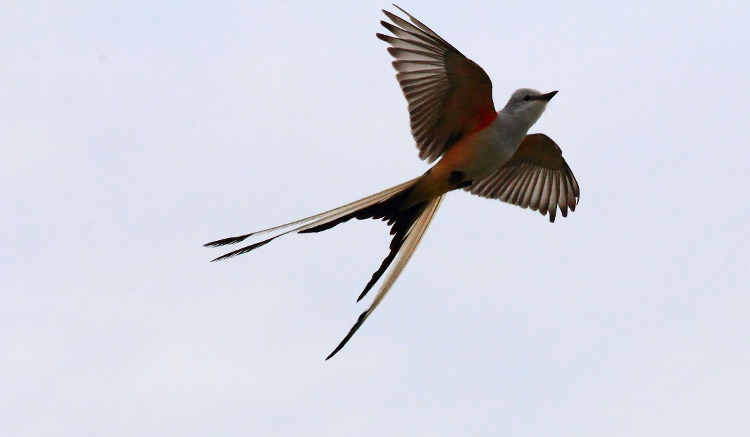 https://abs.twimg.com/emoji/v2/... draggable="false" alt="✂️" title="Scissors" aria-label="Emoji: Scissors">https://abs.twimg.com/emoji/v2/... draggable="false" alt="✂️" title="Scissors" aria-label="Emoji: Scissors">https://abs.twimg.com/emoji/v2/... draggable="false" alt="📸" title="Camera with flash" aria-label="Emoji: Camera with flash"> Scissor-tailed flycatcher (Tyrannus forficatus)." title="https://abs.twimg.com/emoji/v2/... draggable="false" alt="✂️" title="Scissors" aria-label="Emoji: Scissors">https://abs.twimg.com/emoji/v2/... draggable="false" alt="✂️" title="Scissors" aria-label="Emoji: Scissors">https://abs.twimg.com/emoji/v2/... draggable="false" alt="✂️" title="Scissors" aria-label="Emoji: Scissors">https://abs.twimg.com/emoji/v2/... draggable="false" alt="📸" title="Camera with flash" aria-label="Emoji: Camera with flash"> Scissor-tailed flycatcher (Tyrannus forficatus)." class="img-responsive" style="max-width:100%;"/>
https://abs.twimg.com/emoji/v2/... draggable="false" alt="✂️" title="Scissors" aria-label="Emoji: Scissors">https://abs.twimg.com/emoji/v2/... draggable="false" alt="✂️" title="Scissors" aria-label="Emoji: Scissors">https://abs.twimg.com/emoji/v2/... draggable="false" alt="📸" title="Camera with flash" aria-label="Emoji: Camera with flash"> Scissor-tailed flycatcher (Tyrannus forficatus)." title="https://abs.twimg.com/emoji/v2/... draggable="false" alt="✂️" title="Scissors" aria-label="Emoji: Scissors">https://abs.twimg.com/emoji/v2/... draggable="false" alt="✂️" title="Scissors" aria-label="Emoji: Scissors">https://abs.twimg.com/emoji/v2/... draggable="false" alt="✂️" title="Scissors" aria-label="Emoji: Scissors">https://abs.twimg.com/emoji/v2/... draggable="false" alt="📸" title="Camera with flash" aria-label="Emoji: Camera with flash"> Scissor-tailed flycatcher (Tyrannus forficatus)." class="img-responsive" style="max-width:100%;"/>
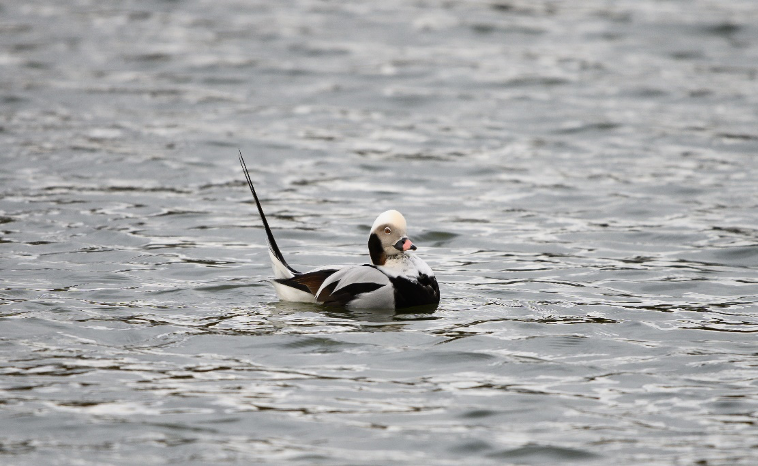 Long-tailed https://abs.twimg.com/emoji/v2/... draggable="false" alt="🦆" title="Duck" aria-label="Emoji: Duck"> (Clangula hyemalis)." title="https://abs.twimg.com/emoji/v2/... draggable="false" alt="📸" title="Camera with flash" aria-label="Emoji: Camera with flash"> Long-tailed https://abs.twimg.com/emoji/v2/... draggable="false" alt="🦆" title="Duck" aria-label="Emoji: Duck"> (Clangula hyemalis)." class="img-responsive" style="max-width:100%;"/>
Long-tailed https://abs.twimg.com/emoji/v2/... draggable="false" alt="🦆" title="Duck" aria-label="Emoji: Duck"> (Clangula hyemalis)." title="https://abs.twimg.com/emoji/v2/... draggable="false" alt="📸" title="Camera with flash" aria-label="Emoji: Camera with flash"> Long-tailed https://abs.twimg.com/emoji/v2/... draggable="false" alt="🦆" title="Duck" aria-label="Emoji: Duck"> (Clangula hyemalis)." class="img-responsive" style="max-width:100%;"/>
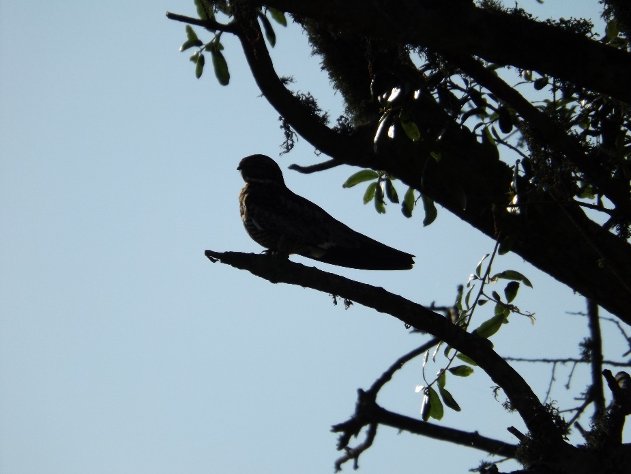 Common Nighthawk (Chordeiles minor)" title="In time you’ll be able to assess something birders call ‘gestalt:& #39; the overall shape, posture, and proportions of a bird. Learning the gestalt of different species can help you to quickly identify common birds. Even in silhouette! https://abs.twimg.com/emoji/v2/... draggable="false" alt="📸" title="Camera with flash" aria-label="Emoji: Camera with flash"> Common Nighthawk (Chordeiles minor)" class="img-responsive" style="max-width:100%;"/>
Common Nighthawk (Chordeiles minor)" title="In time you’ll be able to assess something birders call ‘gestalt:& #39; the overall shape, posture, and proportions of a bird. Learning the gestalt of different species can help you to quickly identify common birds. Even in silhouette! https://abs.twimg.com/emoji/v2/... draggable="false" alt="📸" title="Camera with flash" aria-label="Emoji: Camera with flash"> Common Nighthawk (Chordeiles minor)" class="img-responsive" style="max-width:100%;"/>
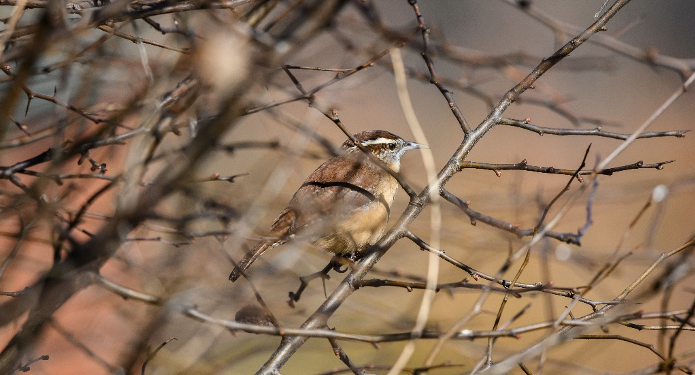 .Listen to this @MacaulayLibrary recording of a Carolina wren (Thryothorus ludovicianus), made by @NMNH& #39;s Jacob Saucier. https://macaulaylibrary.org/asset/177..." title="Cardinals give loud clear whistles and wrens make rolling musical warbles. Pay attention to common birds and their distinctive https://abs.twimg.com/emoji/v2/... draggable="false" alt="🎶" title="Multiple musical notes" aria-label="Emoji: Multiple musical notes">.Listen to this @MacaulayLibrary recording of a Carolina wren (Thryothorus ludovicianus), made by @NMNH& #39;s Jacob Saucier. https://macaulaylibrary.org/asset/177..." class="img-responsive" style="max-width:100%;"/>
.Listen to this @MacaulayLibrary recording of a Carolina wren (Thryothorus ludovicianus), made by @NMNH& #39;s Jacob Saucier. https://macaulaylibrary.org/asset/177..." title="Cardinals give loud clear whistles and wrens make rolling musical warbles. Pay attention to common birds and their distinctive https://abs.twimg.com/emoji/v2/... draggable="false" alt="🎶" title="Multiple musical notes" aria-label="Emoji: Multiple musical notes">.Listen to this @MacaulayLibrary recording of a Carolina wren (Thryothorus ludovicianus), made by @NMNH& #39;s Jacob Saucier. https://macaulaylibrary.org/asset/177..." class="img-responsive" style="max-width:100%;"/>
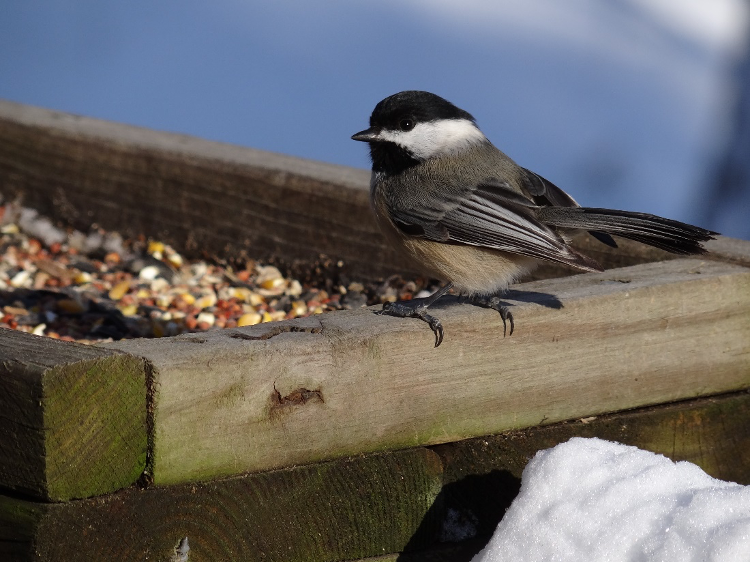 https://abs.twimg.com/emoji/v2/... draggable="false" alt="🦉" title="Owl" aria-label="Emoji: Owl">https://abs.twimg.com/emoji/v2/... draggable="false" alt="🦆" title="Duck" aria-label="Emoji: Duck">https://abs.twimg.com/emoji/v2/... draggable="false" alt="🦢" title="Swan" aria-label="Emoji: Swan">https://abs.twimg.com/emoji/v2/... draggable="false" alt="🦅" title="Eagle" aria-label="Emoji: Eagle">https://abs.twimg.com/emoji/v2/... draggable="false" alt="🦜" title="Parrot" aria-label="Emoji: Parrot">https://abs.twimg.com/emoji/v2/... draggable="false" alt="🦃" title="Turkey (bird)" aria-label="Emoji: Turkey (bird)">https://abs.twimg.com/emoji/v2/... draggable="false" alt="🦚" title="Peacock" aria-label="Emoji: Peacock">https://abs.twimg.com/emoji/v2/... draggable="false" alt="🕊️" title="Dove of peace" aria-label="Emoji: Dove of peace"> #NatureNerding101 #SpringMigrationhttps://abs.twimg.com/emoji/v2/... draggable="false" alt="📸" title="Camera with flash" aria-label="Emoji: Camera with flash"> Black-capped Chickadee (Poecile atricapillus)." title="Okay. Take a break from your screen. Look out the window. Start birding. https://abs.twimg.com/emoji/v2/... draggable="false" alt="🐦" title="Bird" aria-label="Emoji: Bird">https://abs.twimg.com/emoji/v2/... draggable="false" alt="🦉" title="Owl" aria-label="Emoji: Owl">https://abs.twimg.com/emoji/v2/... draggable="false" alt="🦆" title="Duck" aria-label="Emoji: Duck">https://abs.twimg.com/emoji/v2/... draggable="false" alt="🦢" title="Swan" aria-label="Emoji: Swan">https://abs.twimg.com/emoji/v2/... draggable="false" alt="🦅" title="Eagle" aria-label="Emoji: Eagle">https://abs.twimg.com/emoji/v2/... draggable="false" alt="🦜" title="Parrot" aria-label="Emoji: Parrot">https://abs.twimg.com/emoji/v2/... draggable="false" alt="🦃" title="Turkey (bird)" aria-label="Emoji: Turkey (bird)">https://abs.twimg.com/emoji/v2/... draggable="false" alt="🦚" title="Peacock" aria-label="Emoji: Peacock">https://abs.twimg.com/emoji/v2/... draggable="false" alt="🕊️" title="Dove of peace" aria-label="Emoji: Dove of peace"> #NatureNerding101 #SpringMigrationhttps://abs.twimg.com/emoji/v2/... draggable="false" alt="📸" title="Camera with flash" aria-label="Emoji: Camera with flash"> Black-capped Chickadee (Poecile atricapillus)." class="img-responsive" style="max-width:100%;"/>
https://abs.twimg.com/emoji/v2/... draggable="false" alt="🦉" title="Owl" aria-label="Emoji: Owl">https://abs.twimg.com/emoji/v2/... draggable="false" alt="🦆" title="Duck" aria-label="Emoji: Duck">https://abs.twimg.com/emoji/v2/... draggable="false" alt="🦢" title="Swan" aria-label="Emoji: Swan">https://abs.twimg.com/emoji/v2/... draggable="false" alt="🦅" title="Eagle" aria-label="Emoji: Eagle">https://abs.twimg.com/emoji/v2/... draggable="false" alt="🦜" title="Parrot" aria-label="Emoji: Parrot">https://abs.twimg.com/emoji/v2/... draggable="false" alt="🦃" title="Turkey (bird)" aria-label="Emoji: Turkey (bird)">https://abs.twimg.com/emoji/v2/... draggable="false" alt="🦚" title="Peacock" aria-label="Emoji: Peacock">https://abs.twimg.com/emoji/v2/... draggable="false" alt="🕊️" title="Dove of peace" aria-label="Emoji: Dove of peace"> #NatureNerding101 #SpringMigrationhttps://abs.twimg.com/emoji/v2/... draggable="false" alt="📸" title="Camera with flash" aria-label="Emoji: Camera with flash"> Black-capped Chickadee (Poecile atricapillus)." title="Okay. Take a break from your screen. Look out the window. Start birding. https://abs.twimg.com/emoji/v2/... draggable="false" alt="🐦" title="Bird" aria-label="Emoji: Bird">https://abs.twimg.com/emoji/v2/... draggable="false" alt="🦉" title="Owl" aria-label="Emoji: Owl">https://abs.twimg.com/emoji/v2/... draggable="false" alt="🦆" title="Duck" aria-label="Emoji: Duck">https://abs.twimg.com/emoji/v2/... draggable="false" alt="🦢" title="Swan" aria-label="Emoji: Swan">https://abs.twimg.com/emoji/v2/... draggable="false" alt="🦅" title="Eagle" aria-label="Emoji: Eagle">https://abs.twimg.com/emoji/v2/... draggable="false" alt="🦜" title="Parrot" aria-label="Emoji: Parrot">https://abs.twimg.com/emoji/v2/... draggable="false" alt="🦃" title="Turkey (bird)" aria-label="Emoji: Turkey (bird)">https://abs.twimg.com/emoji/v2/... draggable="false" alt="🦚" title="Peacock" aria-label="Emoji: Peacock">https://abs.twimg.com/emoji/v2/... draggable="false" alt="🕊️" title="Dove of peace" aria-label="Emoji: Dove of peace"> #NatureNerding101 #SpringMigrationhttps://abs.twimg.com/emoji/v2/... draggable="false" alt="📸" title="Camera with flash" aria-label="Emoji: Camera with flash"> Black-capped Chickadee (Poecile atricapillus)." class="img-responsive" style="max-width:100%;"/>


